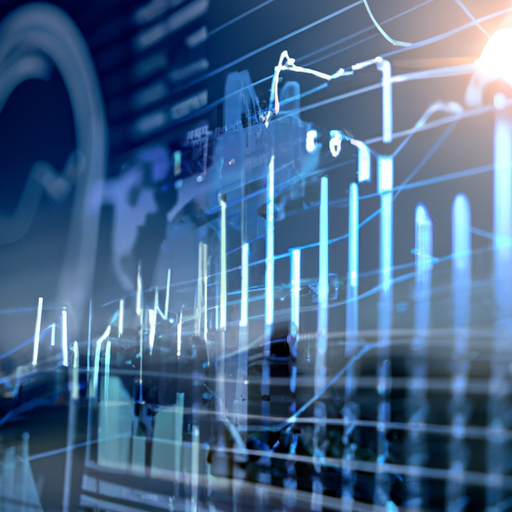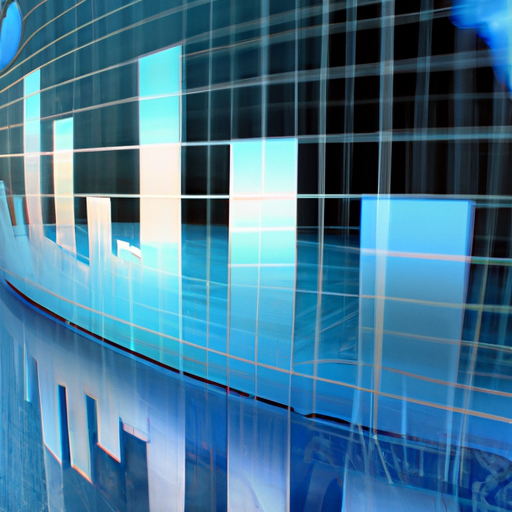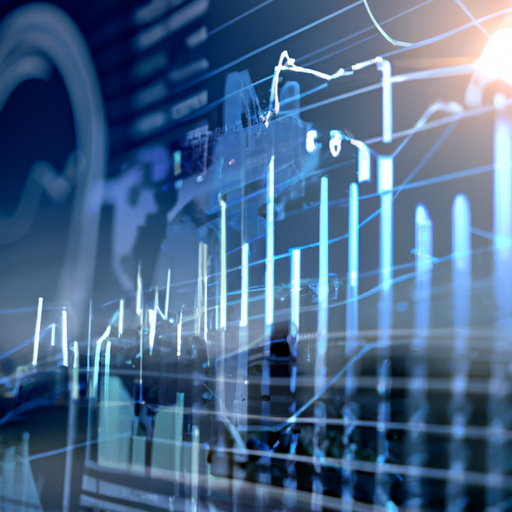Trend Forecasting Jobs
So, you’re curious about trend forecasting jobs, huh? Well, you’ve come to the right place! In this article, we’re going to give you a sneak peek into the exciting world of trend forecasting and why it’s becoming a hot career choice. Brace yourself for an inside look at how trend forecasters predict the future of fashion, design, technology, and so much more. Get ready to be amazed by the skills, creativity, and intuition required to excel in this fast-paced and ever-evolving field. Your journey into trend forecasting starts now!
Table of Contents
Trend Forecasting Jobs
If you have a knack for predicting trends and a passion for staying ahead of the curve, a career in trend forecasting might be the perfect fit for you. Trend forecasting is a fascinating field that involves analyzing current and emerging trends to predict what will be popular in the future. From fashion and interior design to advertising and technology, trend forecasting plays a crucial role in helping businesses anticipate consumer preferences, identify market trends, and gain a competitive advantage. In this article, we will explore the world of trend forecasting jobs, the skills required, the job roles available, the industries that rely on trend forecasting, the educational background needed, the tools and techniques used, the challenges faced, the advancements in the field, and the job market and salary potential.

1. Overview of Trend Forecasting
Trend forecasting is the practice of predicting future developments and changes in various industries based on current and emerging trends. It involves analyzing data, conducting market research, and using creative and analytical skills to identify patterns and make predictions. Trend forecasters collect information from a variety of sources such as consumer behavior, fashion shows, trade shows, social media, and market research reports to make informed predictions about upcoming trends. These predictions are then used by businesses to make strategic decisions regarding product development, marketing campaigns, and overall business strategies.
2. Importance of Trend Forecasting
Trend forecasting is crucial for businesses to stay competitive in today’s fast-paced and ever-changing market. Let’s explore why trend forecasting is important in more detail.
2.1 Anticipating Consumer Preferences
One of the main reasons why trend forecasting is important is its ability to anticipate consumer preferences. By analyzing current trends and understanding consumer behavior, trend forecasters can predict what consumers will like and dislike in the future. This information is invaluable for businesses as it enables them to develop products or services that meet the needs and desires of their target audience. Anticipating consumer preferences can also help businesses to stay ahead of their competitors by offering innovative and unique products or services that resonate with consumers.
2.2 Identifying Market Trends
In addition to predicting consumer preferences, trend forecasting also helps businesses identify market trends. By analyzing data and monitoring industry developments, trend forecasters can identify emerging trends that have the potential to disrupt markets. This information can guide businesses in adapting their strategies and staying ahead of the competition. For example, a trend forecaster in the tech industry might identify the rise of wearable technology as a major trend and advise businesses to invest in the development of wearable devices.
2.3 Gaining Competitive Advantage
Another significant benefit of trend forecasting is the ability to gain a competitive advantage. By being the first to identify and act on emerging trends, businesses can position themselves as industry leaders and differentiate themselves from their competitors. This can result in increased market share, customer loyalty, and profitability. For example, a fashion retailer that accurately predicts and embraces the next big fashion trend can attract a loyal customer base and outsell its competitors.
3. Skills Required for Trend Forecasting Jobs
Trend forecasting requires a unique blend of analytical, creative, and research skills. Let’s dive into the skills that are essential for success in trend forecasting jobs.
3.1 Analytical Skills
Analytical skills are crucial in trend forecasting as they involve the ability to interpret data, identify patterns, and make predictions based on the analysis. Trend forecasters must be able to analyze large volumes of data from various sources and extract meaningful insights. They need to be able to identify trends, understand their implications, and assess their potential impact on the market. Strong analytical skills also involve being able to think critically and make informed decisions based on the available data.
3.2 Creativity
Creativity is another important skill in trend forecasting. Trend forecasters need to have the ability to think outside the box and come up with innovative ideas and predictions. They must be able to connect seemingly unrelated concepts and identify new trends before they become mainstream. A creative mindset allows trend forecasters to envision the future and anticipate what will be popular among consumers. It also helps them to develop unique and compelling strategies for businesses based on their predictions.
3.3 Research Skills
Research skills are essential for trend forecasters as they involve gathering information from various sources and evaluating its reliability and relevance. Trend forecasters need to be able to conduct thorough research and stay up-to-date with the latest industry developments. They must be able to navigate through vast amounts of information and extract key insights. Strong research skills also involve the ability to identify reliable sources, analyze market research reports, and conduct surveys and interviews to gather valuable data.
3.4 Knowledge of Industry and Market
Having a deep understanding of the industry and market in which trend forecasters operate is vital for success. Trend forecasters need to be well-versed in the trends and developments of their industry, as well as the factors that influence consumer behavior. They must have a solid grasp on the cultural, social, and economic factors that shape trends. This knowledge allows trend forecasters to make more accurate predictions and provide valuable insights to businesses.
4. Job Roles in Trend Forecasting
Trend forecasting encompasses a variety of job roles, each with its own unique set of responsibilities and requirements. Let’s explore some of the most common job roles in trend forecasting.
4.1 Trend Analyst
A trend analyst is responsible for analyzing current and emerging trends and providing insights to businesses. They collect and analyze data, conduct market research, and develop reports and presentations to communicate their findings. Trend analysts use their analytical and research skills to identify patterns and predict future trends.
4.2 Trend Researcher
A trend researcher focuses on gathering information and conducting research to identify trends. They collect data from a variety of sources such as trade shows, fashion shows, social media, and consumer behavior reports. Trend researchers have strong research skills and are able to synthesize information to identify emerging trends.
4.3 Trend Strategist
A trend strategist is responsible for developing and implementing strategies based on trend forecasts. They work closely with businesses to understand their goals and objectives and develop strategic plans that leverage emerging trends. Trend strategists have a deep understanding of consumer behavior and market dynamics.
4.4 Trend Consultant
A trend consultant provides expert advice and guidance to businesses based on trend forecasts. They help businesses identify opportunities and develop strategies to capitalize on emerging trends. Trend consultants often work with multiple clients and are knowledgeable about various industries and markets.
4.5 Trend Forecaster
A trend forecaster is responsible for making predictions about future trends based on their analysis and research. They develop trend forecasts that businesses can use to inform their decision-making processes. Trend forecasters have a combination of analytical, creative, and research skills.

5. Industries That Require Trend Forecasting
Trend forecasting is relevant in a wide range of industries that rely on consumer preferences and market trends. Let’s take a look at some of the industries that require trend forecasting.
5.1 Fashion and Apparel
The fashion and apparel industry heavily relies on trend forecasting. Fashion designers, retailers, and manufacturers need to stay in tune with the latest fashion trends to meet consumer demand. Trend forecasting helps them develop new collections, plan inventory, and create marketing campaigns that resonate with consumers.
5.2 Interior Design
In the world of interior design, trend forecasting plays a crucial role in determining design aesthetics and styles. Interior designers use trend forecasts to select colors, materials, and furniture that align with current and future design trends. Trend forecasting helps them create spaces that are visually appealing and in line with consumer preferences.
5.3 Consumer Goods
The consumer goods industry, which includes products such as electronics, appliances, and personal care items, relies on trend forecasting to understand consumer preferences and develop products that meet their needs. Trend forecasting helps businesses stay competitive by introducing new features or designs that align with emerging trends.
5.4 Advertising and Marketing
In the advertising and marketing industry, trend forecasting helps businesses develop effective campaigns that resonate with consumers. Trend forecasters provide insights on the latest trends in consumer behavior, media consumption, and advertising strategies. This information enables businesses to create impactful and relevant advertising and marketing campaigns.
5.5 Technology
Even the technology industry benefits from trend forecasting. Tech companies need to anticipate consumer preferences and develop new products and services to meet them. Trend forecasting in the tech industry can involve predicting the adoption of new technologies, identifying emerging markets, and understanding the impact of technological advancements on consumer behavior.
6. Educational Background for Trend Forecasting Jobs
While there is no specific educational path for trend forecasting jobs, certain educational backgrounds can be advantageous. Here are some fields of study that can provide a solid foundation for a career in trend forecasting.
6.1 Fashion Design or Merchandising
For those interested in trend forecasting in the fashion industry, a background in fashion design or merchandising can be beneficial. These programs provide knowledge of fashion trends, consumer behavior, and the fashion business. They can help develop a keen eye for design aesthetics and an understanding of the fashion market.
6.2 Market Research
A background in market research can be valuable for trend forecasting jobs in any industry. Market research programs provide knowledge and skills in data analysis, consumer behavior, and market trends. They teach techniques for gathering and interpreting data, which are essential in trend forecasting.
6.3 Business or Marketing
A degree in business or marketing provides a broad understanding of business principles and consumer behavior. It equips individuals with skills in strategic planning, market analysis, and branding. This knowledge can be applied to trend forecasting jobs across various industries.
6.4 Statistics or Data Analytics
A background in statistics or data analytics can be advantageous for trend forecasting jobs that involve analyzing large volumes of data. These programs provide skills in data collection, data analysis, and statistical modeling. They teach individuals how to extract insights from data and make predictions based on statistical analysis.
7. Tools and Techniques Used in Trend Forecasting
Trend forecasters utilize various tools and techniques to gather information, analyze data, and make predictions. Let’s explore some of the commonly used tools and techniques in trend forecasting.
7.1 Data Analysis Software
Data analysis software, such as Excel, SPSS, or Tableau, is commonly used to analyze large data sets. These tools enable trend forecasters to extract meaningful insights, visualize data, and identify patterns. Data analysis software allows for efficient and accurate data analysis and enhances the accuracy of trend forecasts.
7.2 Social Media Monitoring
Social media monitoring tools help trend forecasters track and analyze consumer conversations and behavior on platforms such as Twitter, Instagram, and Facebook. These tools provide valuable insights into consumer preferences, opinions, and trends. Social media monitoring enables trend forecasters to stay up-to-date with the latest trends and identify emerging ones.
7.3 Market Research Reports
Market research reports are a valuable source of information for trend forecasting. They provide data on consumer behavior, market trends, and industry developments. Trend forecasters analyze market research reports to understand the current market landscape and make predictions about future trends.
7.4 Surveys and Interviews
Surveys and interviews are commonly used by trend forecasters to gather primary data. Surveys can be designed to collect information directly from consumers about their preferences and opinions. Interviews with industry experts, designers, or consumers can provide valuable insights into emerging trends and consumer behavior.
7.5 Trend Analysis Models
Trend analysis models are mathematical models used to analyze historical data and predict future trends. These models use statistical techniques to identify patterns and make predictions based on historical trends. Trend analysis models enhance the accuracy of trend forecasts and help businesses make informed decisions.
8. Challenges of Trend Forecasting
While trend forecasting can be an exciting and rewarding career, it also comes with its own set of challenges. Let’s explore some of the challenges faced by trend forecasters.
8.1 Accuracy
One of the main challenges in trend forecasting is the accuracy of predictions. Predicting future trends is not an exact science, and there is always a level of uncertainty involved. Trend forecasters must constantly evaluate and refine their methodologies to improve the accuracy of their forecasts.
8.2 Changing Consumer Behavior
Consumer behavior is constantly changing and evolving, making it challenging to predict future preferences. Factors such as cultural shifts, economic changes, and technological advancements can significantly impact consumer behavior. Trend forecasters must stay vigilant and adapt their predictions to reflect these changes.
8.3 Globalization
In today’s globalized world, trends can spread rapidly across countries and continents. Trend forecasters must consider the global nature of trends and their potential impact on different markets. They need to be aware of cultural differences and varying consumer preferences in different regions.
8.4 Time Constraints
Trend forecasting often operates in a fast-paced environment where decisions need to be made quickly. Trend forecasters may face tight deadlines and time constraints, requiring them to gather and analyze information efficiently. They must be able to work effectively under pressure and deliver accurate forecasts within the given timeframe.
8.5 Data Overload
The abundance of data available can be overwhelming for trend forecasters. Sorting through large volumes of data and extracting meaningful insights can be a time-consuming task. Trend forecasters must develop efficient strategies for data analysis and stay up-to-date with the latest data analysis techniques.
9. Advancements in Trend Forecasting
Advancements in technology have significantly impacted the field of trend forecasting. Let’s explore some of the advancements that have revolutionized trend forecasting.
9.1 Artificial Intelligence
Artificial intelligence (AI) has the potential to revolutionize trend forecasting by automating data analysis and prediction processes. AI can analyze vast amounts of data quickly and identify patterns that humans might miss. Trend forecasters can leverage AI algorithms to enhance the accuracy and efficiency of their predictions.
9.2 Big Data Analytics
Big data analytics involves analyzing large and complex data sets to identify patterns, trends, and insights. Trend forecasters can use big data analytics to analyze consumer behavior data, social media data, and market trends. This approach provides a more comprehensive understanding of trends and enhances the accuracy of predictions.
9.3 Machine Learning
Machine learning algorithms can learn from historical data and make predictions based on patterns and trends. Trend forecasters can utilize machine learning algorithms to analyze historical trends, identify patterns, and make predictions about future trends. Machine learning algorithms continuously improve over time as they learn from new data.
9.4 Predictive Analytics
Predictive analytics involves using historical and current data to make predictions about future events. Trend forecasters can leverage predictive analytics to analyze data and identify trends that have the potential to shape the future. Predictive analytics enables trend forecasters to make accurate predictions and provide valuable insights to businesses.
9.5 Collaborative Platforms
Collaborative platforms are online platforms that allow trend forecasters to share information, exchange ideas, and collaborate on trend forecasting projects. These platforms enable trend forecasters to tap into a global network of experts and access a wealth of knowledge. Collaborative platforms enhance the efficiency and accuracy of trend forecasting by facilitating collaboration and knowledge sharing.
10. Job Market and Salary Potential
The job market for trend forecasting is diverse and offers various opportunities for growth and career development. Let’s take a look at the job market and the salary potential in trend forecasting.
10.1 Job Opportunities
Trend forecasting jobs can be found in a variety of industries, including fashion, design, marketing, and technology. Trend forecasters can work for large corporations, creative agencies, consulting firms, or as independent consultants. Job titles may include trend analyst, trend researcher, trend strategist, or trend consultant. The demand for trend forecasters is expected to grow as businesses recognize the value of staying ahead of consumer preferences and market trends.
10.2 Salary Range
The salary range for trend forecasters can vary depending on factors such as experience, industry, and location. Entry-level positions may have salaries ranging from $40,000 to $60,000 per year, while senior-level positions may have salaries exceeding $100,000 per year. Salaries may also vary based on the sector and company size.
10.3 Career Growth
Career growth in trend forecasting is dependent on gaining experience, developing expertise, and expanding industry knowledge. Trend forecasters can progress to managerial positions, lead trend forecasting teams, or start their own consulting businesses. Continuous learning, networking, and staying up-to-date with industry trends are essential for career growth in trend forecasting.
11. Conclusion
In conclusion, trend forecasting is an exciting and dynamic field that helps businesses anticipate consumer preferences, identify market trends, and gain a competitive advantage. Trend forecasters play a crucial role in analyzing data, conducting research, and making predictions about future trends. The skills required for trend forecasting include analytical skills, creativity, research skills, and knowledge of the industry and market. Various job roles, such as trend analysts, trend strategists, and trend consultants, exist in trend forecasting. Industries such as fashion, interior design, consumer goods, advertising and marketing, and technology rely on trend forecasting to stay competitive. Educational backgrounds in fashion design, market research, business, or statistics can be beneficial for a career in trend forecasting. Tools and techniques used in trend forecasting vary from data analysis software to social media monitoring and market research reports. Despite the challenges of accuracy, changing consumer behavior, globalization, time constraints, and data overload, advancements in AI, big data analytics, machine learning, predictive analytics, and collaborative platforms have revolutionized trend forecasting. The job market for trend forecasting offers various opportunities for growth, and salaries can range depending on experience and industry. With the right skills and expertise, a career in trend forecasting can be both fulfilling and financially rewarding.


